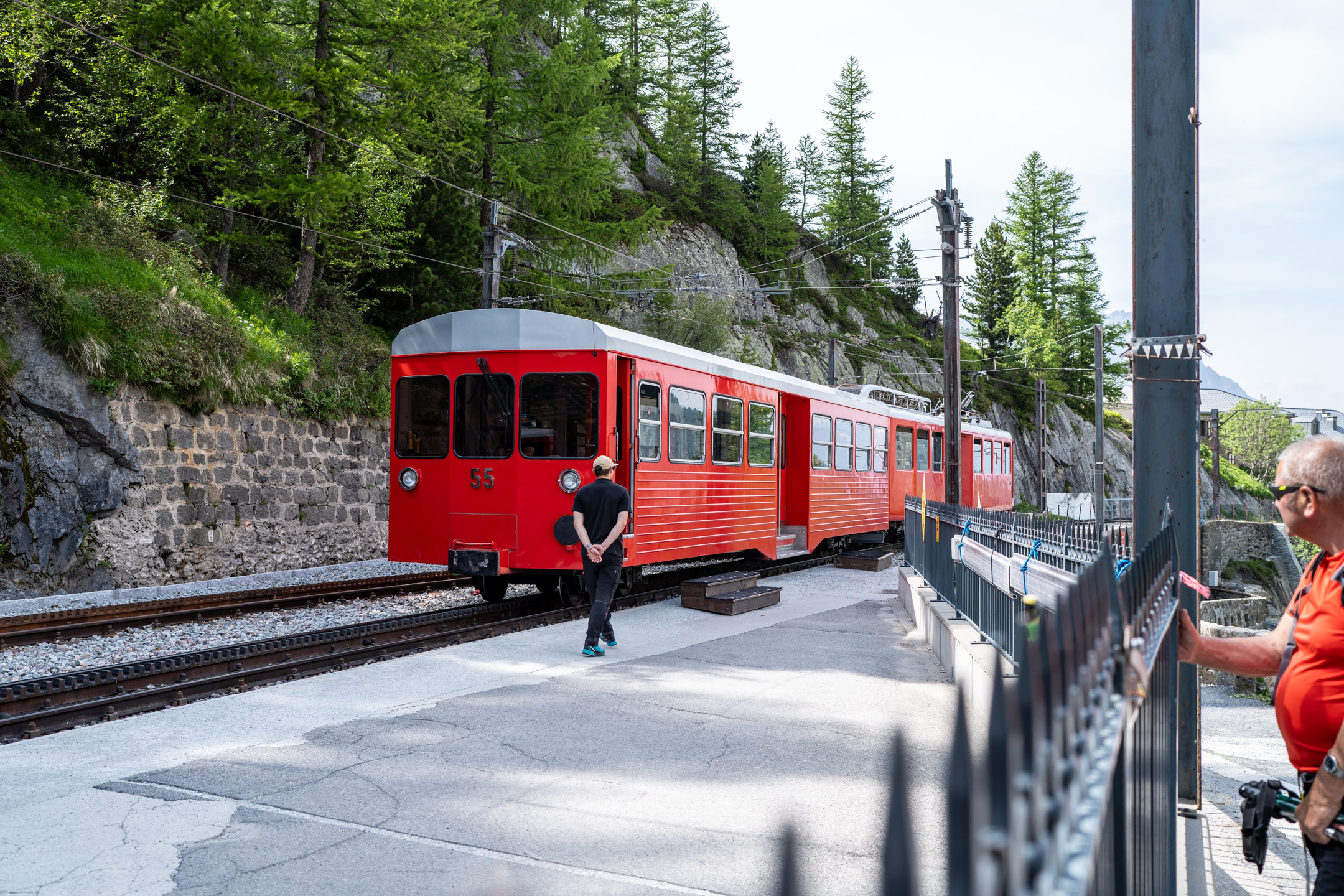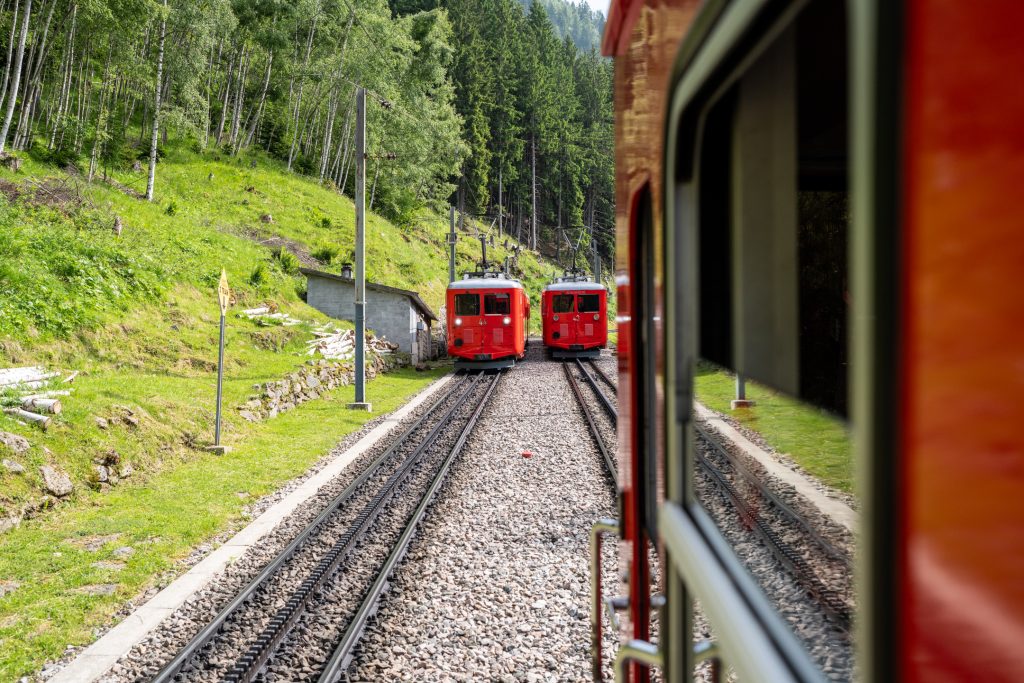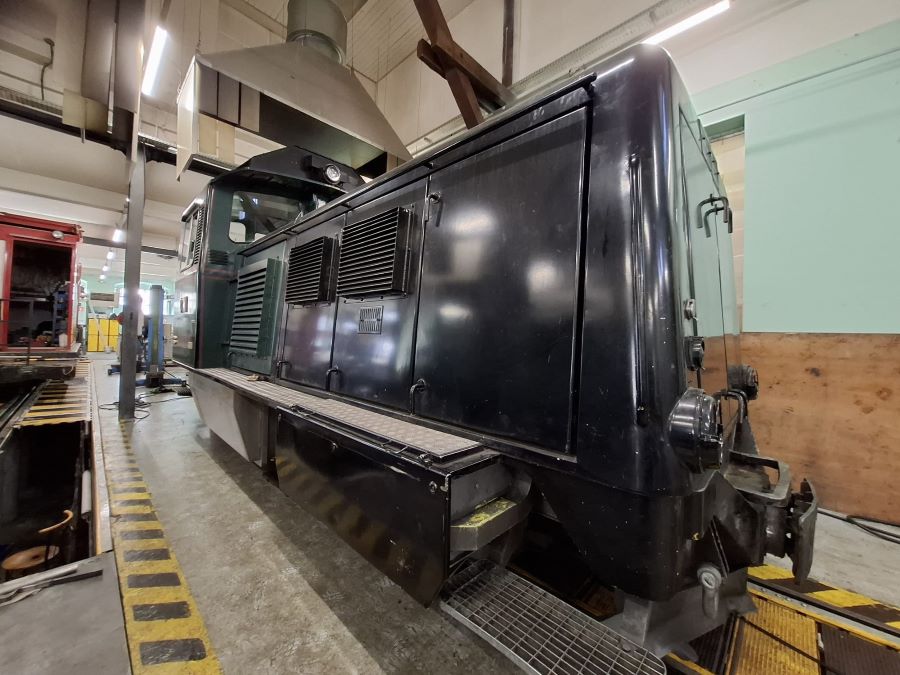The Cogwheel
The original railway line of the cogwheel train (rack and pinion train) stretched for 4,760 metres, starting at Chamonix station and crossing the Planards and Caillet sidings. At Montenvers station, the rack railway initially covered the entire length of tracks 1 and 2, but its end was moved of the entrance to the station after the installation of track 3. This allowed passengers to get on and off without difficulty.
In the 1970s, to avoid slowing down to 5 km/h during the transitions between grip and rack sections, adjustments were made. The rack was extended to tracks 1 and 2 in Chamonix and to tracks 2 and 3 in Montenvers, while track 1 and the parking drawer of this station were taken out of service. These modifications allowed trains to enter and exit the terminals at normal speeds, thus improving their rotation during rush hour
The track
The railway was built to a gauge of one metre between the rails, with a slight widening in the curves. The rails, delivered in 12-metre bars, were assembled by six-bolt joint bars and attached to the sleepers using Roth & Schueler toads. The metal sleepers are 1.80 m long and weigh 31 kg each. There were fifteen per length of rail, which allowed the track to support a maximum load of 10 tonnes per axle for the vehicles running. The ballast is made of crushed stone. Originally, it covered the ties, and the track had no superelevation in curves. During electrification, the sleepers were uncovered and a slight overhang was added to accommodate the higher speed of the new trains.
Rolling stock
The engines, cars and wagons of the network are inspired by the vehicles designed at the same time for the mountain railways in Switzerland. The technical design of this equipment was entrusted to the Schweizerische Lokomotiv- und Maschinenfabrik (SLM) in Winterthur, a renowned Swiss specialist, responsible for the equipment of the majority of cogwheel railways around the world. This company manufactured the CM’s steam locomotives and supplied the traction and braking systems for the electric multiple units, as well as for the cars and wagons.
In accordance with common cogwheel railway practice, the locomotive is systematically positioned downstream of the other vehicles in the convoy. It pushes the vehicles when going up and holds them back when going down.

The Bhe 4/4 railcars N°41 to 46
The Montenvers Railway has integrated six Swiss-designed electric multiple units, forming a homogeneous series with some minor differences.
When the decision was made to electrify the Montenvers line, a first order for four railcars was placed in August 1952 at the Schweizerische Lokomotiv- und Maschinenfabrik (SLM) in Winterthur, Switzerland. This renowned company was responsible for the manufacture of bodies, bogies and braking equipment.
Between 1998 and 2001, four railcars Nos. 42, 43, 44 and 45 and the corresponding trailers underwent a major overhaul. Full reversibility equipment, called “double driving”, has been installed on the trailers corresponding to these power units.
Diesel locomotives Nos. D32 to D33
Two obstacles have slowed down the development of rack-and-pinion diesel traction: the decrease in the efficiency of diesel engines at high altitudes and the difficulty of obtaining high power within the weight limits allowed by the often light tracks of this type of railway.
Today, diesel locomotives are used for maintenance work, snow removal in the winter season and as emergency trains.

